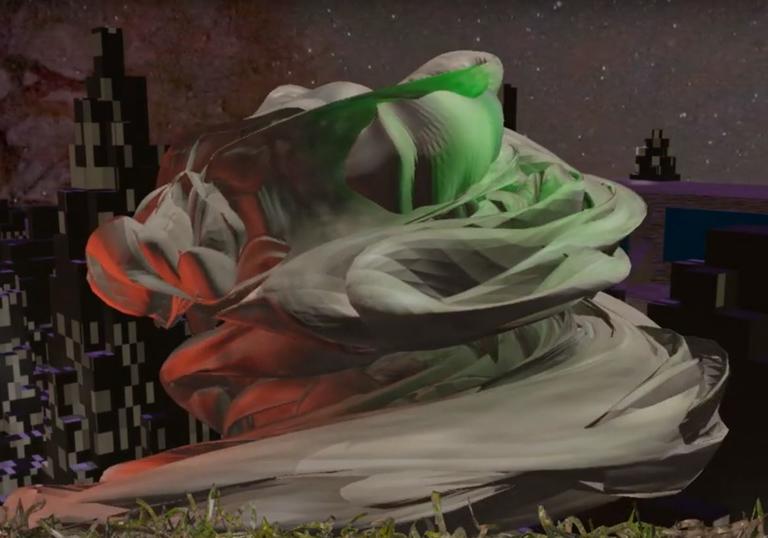Through exploring trans-human and post-human philosophies, the group looked at examples of Laurie’s work which examine construct of personhood and how it has been imbued into our culture. Together they created new work that explores the notion of what makes us human and imagined how the label of ‘human’ could be applied in an increasingly digital future. As a response to the workshop artists Pietro Bardini, Tice Cin and Hector Dyer worked with Antonio Roberts to create This home was not built to last.
Creating This home was not built to last
This city of hyper-concretisation. It needs watering. And sunshine. And soil. For now. For growth.
We create art haunted by absences, by digging up lost futures. Stepping forward into the past to revive a sense of utopia. Think of estates like Broadwater Farm in Tottenham and its mural The Waterfall on the side of Debden block. Used to retrace a sense of peace through a nostalgia for the waters of the River Moselle that run through Haringey, the calming idyll focuses on the absence of what we once had. But how can we interact with a cityscape becoming increasingly toxic, polluted and trauma-laden without disregarding the human desire to build and to re-jig our environment? If we let the city be given back to nature, would we be in control of that? Would our decision to rewild, regrow and regenerate come from authority?
Answers cannot simply be found through a synthesis of hauntology, de-petrification and a deconstruction of capitalist machinery, but these are some tools towards a more pluralistic re-imagining of our futures. If our cities are a sick body, they need to be healed from within. If bodies in the city are sick, we need to grow what can heal them. This piece thinks out loud through its poetry too, 'now I can replace it all with water', as if the toxicity within a body can be filtered through fluid regeneration.
In conversation with glitch artist Antonio Roberts, we formed this response by threading together poetry and other text by Hector Dyer and Tice Cin, ideas formed by Pietro, Tice and Hector within workshops led by Antonio and with music composed by Pietro Bardini. Pietro's composition mainly used foley and sound-design – a play of post-industrial sounds and folk influences into more organic sounds to create a sense of clearance. He uses a sample of distorted and fragmented Cretan Lyra from Alexander Solo to suggest the urgency of this transformation, as though liquid flows through strings and bloats the body. Antonio's visuals re-amalgamate, glitching towards the cornucopian organic: from an image of a formless sick cityscape towards a space of wellness. Rather than the demolition of concrete, Antonio shows us concrete embellished by nature, intertwining.

